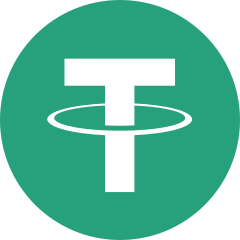WazirX Hack Sends SHIB, WRX Tumbling as Bitcoin, Tether Trade at Massive Discount
Most coins, including market leader bitcoin and USDT, are trading at a significant discount on WazirX.

24H Price
The Tether price is $1.00, a change of 0.06% over the past 24 hours as of 1:04 a.m. The recent price action in Tether left the tokens market capitalization at $112.84B. So far this year, Tether has a change of 0.02%. Tether is classified as a Stablecoin under CoinDesks Digital Asset Classification Standard (DACS).
Tether (USDT) was one of the first cryptocurrencies to peg its market value to a fiat currency. Tether, originally called “Realcoin,” valued each token at $1 to reduce the friction of moving real currency throughout the cryptocurrency ecosystem. Because of that peg to a stable fiat currency, Tether and other similar cryptocurrencies have been dubbed “stablecoins.” Tether is the largest stablecoin by market capitalization, and its users can redeem tethers for dollars. It also issues a cryptocurrency tied to the price of gold known as tether gold, whose value is backed by physical gold bars.
The primary purpose of a stablecoin like USDT is to maintain its value of $1 at all times. Maintaining that value should be straightforward as every USDT is backed by reserves held by the Tether Treasury. However, Tether’s asset has seen some price fluctuations over the years.
USDT hit an all-time high value of $1.32 in July 2018. The all-time low of $0.57 came in March 2015. The price swings occur when demand for the token changes. When the crypto market is surging, demand for stablecoins like tether is typically low. Tether’s history of lawsuits has also played a part in reducing demand for the crypto asset. When the New York Attorney General’s office (NYAG) first took legal action against the project, USDT was pushed off its dollar peg by 3%.
With the exception of those low and high prices, Tether’s price has generally remained close to $1. There can be a minor deviation of $0.01 or $0.02 at times, although those are usually short-lived.
There is no known maximum supply for Tether’s USDT, as new coins are issued based on user demand and reserves held by Tether.
Tether and the tokens it creates are designed to be stablecoins pegged to real-life assets or commodities to provide stability in value, particularly in volatile markets. Tether’s USDT is pegged to the U.S. dollar, but whether the crypto’s reserves consist of actual dollars, or similarly safe assets, has been the subject of contention. In October 2021, Tether paid a $41 million fine to settle allegations by the U.S. Commodity Futures Trading Commision that it lied about its digital currency being supported by fiat currencies. Tether has agreed to provide regular attestations and audits of its reserves, which were found to be held in such risky investments as loans and other cryptocurrencies, instead of cash or cash equivalents.
Tether launched on Bitcoin’s Omni Layer, but continues to expand to other protocols, including Ethereum, Bitcoin Cash, TRON, EOS, Liquid Network, Algorand, SLP, and Solana. Ethereum and TRON are the blockchains with the most USDT supply. Tether is often used to buy and sell different cryptocurrencies.
Tether was founded in 2014 by American software developer Craig Sellars, Bitfinex Chief Financial Officer Giancarlo Devasini and Philip Potter, a former executive at Bitfinex. All three men are still with the company. Jean-Louis van der Velde, Bitfinex’s CEO, is also the CEO of Tether Holdings, Tether’s parent company.
Most coins, including market leader bitcoin and USDT, are trading at a significant discount on WazirX.
Gradwell will be responsible for quantifying the Tether economy to regulators.
Users can mint new tokens using the company's new Alloy platform, which will be part of Tether's upcoming tokenization venture, CEO Paolo Ardoino said.
Tether's focus for investment is financial infrastructure, AI and biotech, CEO Paolo Ardoino said in an interview.
As crypto voters defect from the Democratic Party to support Trump, Rep Read more...


CoinDesk’s Bitcoin and Cryptocurrency Calculator determines the exchange rates between major fiat currencies and cryptocurrencies – including BTC, BCH, ETH and XRP to USD, EUR, GBP, IDR and NGN – with up to six decimal places of accuracy. Conversion rates are based on CoinDesk’s Bitcoin Price Index and the price indices of other digital assets. World currency prices are based on rates obtained via Open Exchange Rates.
Diving in deeper on cryptocurrency.